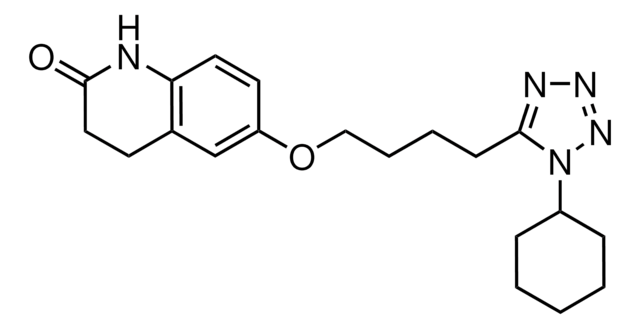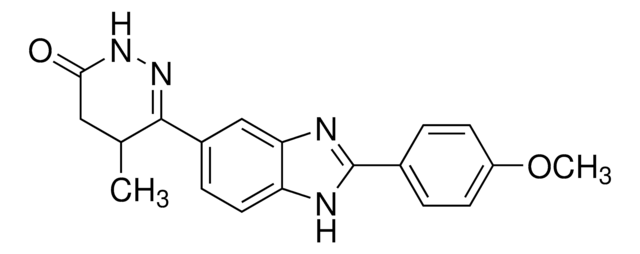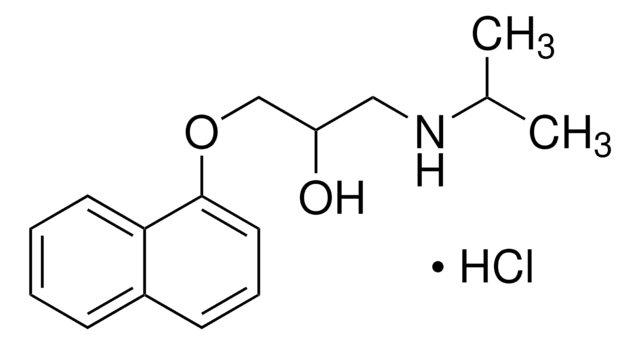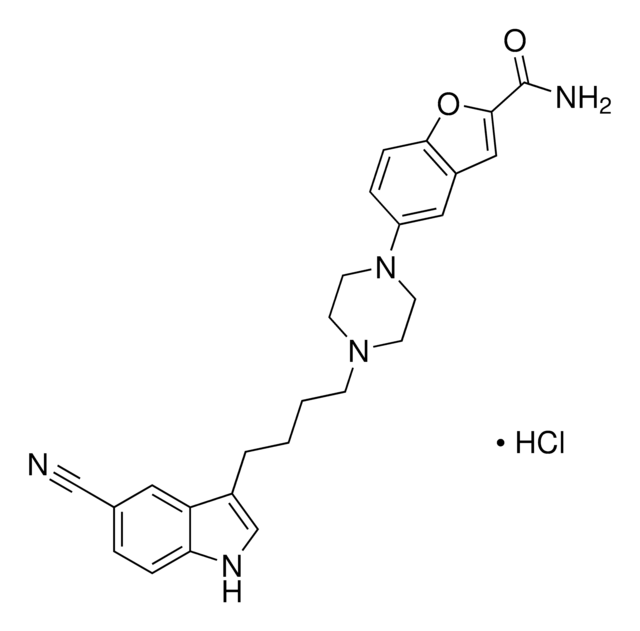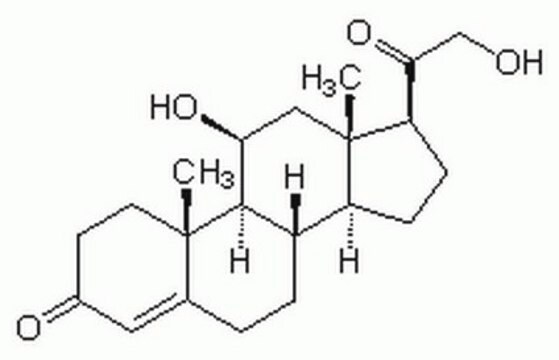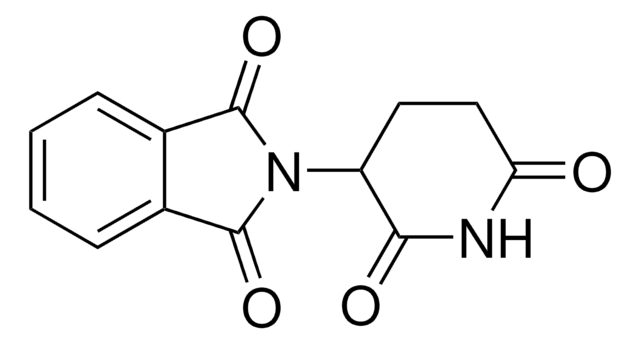C0737
Cilostazol
≥98% (HPLC), powder
Synonym(s):
6-[4-(1-Cyclohexyl-1H-tetrazol-5-yl)-butoxy]-3,4-dihydro-2(1H)-quinolinone, OPC 13013, OPC 21, Pletaal
About This Item
Recommended Products
Quality Level
Assay
≥98% (HPLC)
form
powder
color
off-white
solubility
DMSO: 10 mg/mL, clear
originator
Otsuka Pharma
SMILES string
O=C1CCc2cc(OCCCCc3nnnn3C4CCCCC4)ccc2N1
InChI
1S/C20H27N5O2/c26-20-12-9-15-14-17(10-11-18(15)21-20)27-13-5-4-8-19-22-23-24-25(19)16-6-2-1-3-7-16/h10-11,14,16H,1-9,12-13H2,(H,21,26)
InChI key
RRGUKTPIGVIEKM-UHFFFAOYSA-N
Gene Information
human ... PDE3A(5139) , PDE3B(5140)
Looking for similar products? Visit Product Comparison Guide
General description
Application
- to reduce Madin–Darby cell line (MDCK) proliferation through c-Myc down-regulation
- in the in vitro assessment of toxin delivery in T84 intestinal epithelial cells
- to induce adenosine triphosphate (ATP) release in white adipocytes
Biochem/physiol Actions
Features and Benefits
Signal Word
Warning
Hazard Statements
Precautionary Statements
Hazard Classifications
Repr. 2
Storage Class Code
11 - Combustible Solids
WGK
WGK 3
Flash Point(F)
Not applicable
Flash Point(C)
Not applicable
Personal Protective Equipment
Choose from one of the most recent versions:
Certificates of Analysis (COA)
Don't see the Right Version?
If you require a particular version, you can look up a specific certificate by the Lot or Batch number.
Already Own This Product?
Find documentation for the products that you have recently purchased in the Document Library.
Customers Also Viewed
Articles
Cyclic nucleotides, including cyclic AMP (cAMP), cyclic GMP (cGMP) and cyclic ADP-ribose, have been extensively studied as second messengers of intracellular events initiated by activation of GPCRs. cAMP modifies cell function in all eukaryotic cells, principally through the activation of cAMP-dependent protein kinase (PKA), but also through cAMP-gated ion channels and guanine nucleotide exchange factors directly activated by cAMP.
Our team of scientists has experience in all areas of research including Life Science, Material Science, Chemical Synthesis, Chromatography, Analytical and many others.
Contact Technical Service